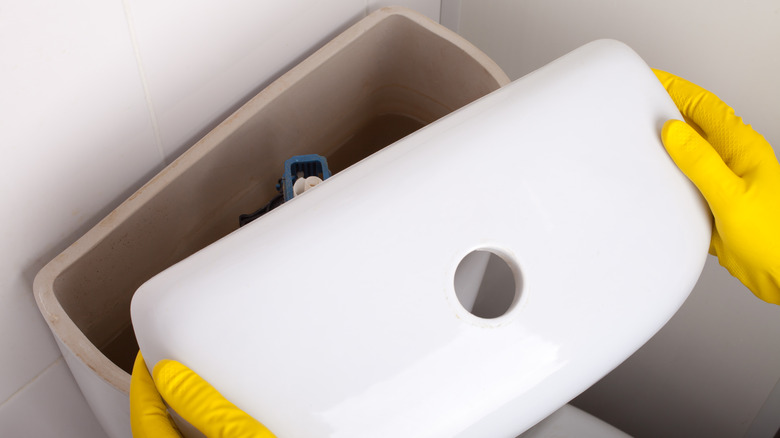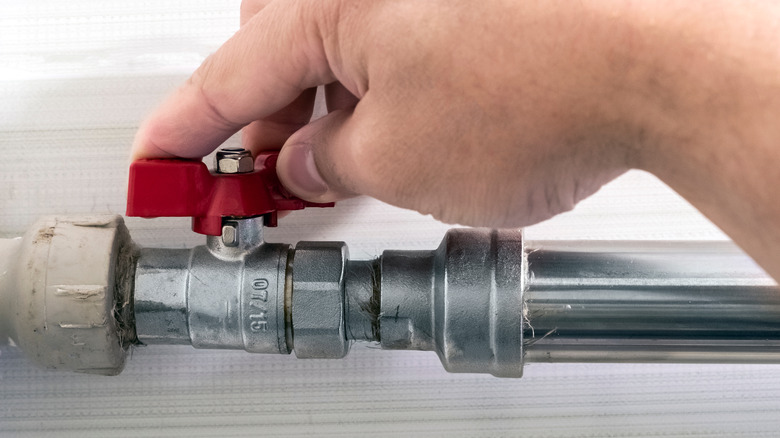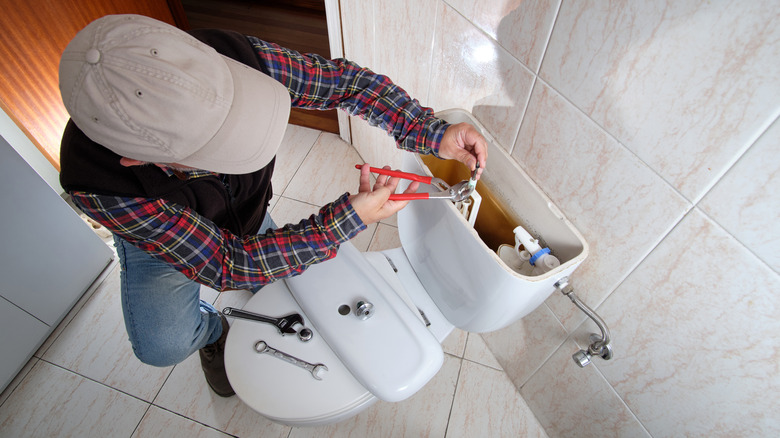What Should You Do About A Leaking Toilet Tank
It's no fun stumbling to the bathroom in the middle of the night only to be greeted by an inch of cold water. Leaking toilets are a major cause of water waste in households, and a constantly running toilet can lose up to 60,000 gallons of water per month. To identify the source of the leak, first give it a visual once over for any signs of water pooling or dampness on the floor or around the tank. If your search yields no results, then you can move onto a simple dye test. This involves adding a few drops of food coloring into the tank and waiting to see if any colored water seeps into the toilet bowl without flushing. If it does, then you know that your flapper valve will need to be replaced.
If the leak is coming from the base of the tank, the culprit is either a worn-out spud washer or deteriorating rubber washers at the bolt connectors. The latter can be easily replaced by turning off the water supply, emptying the tank, and replacing the faulty components.
Before you do anything, turn off the water
To prevent any potential plumbing damage, the first thing you want to do is shut off the water supply to both your toilet and house. Turning off your home's water eliminates the risk of accidentally flooding your humble abode or causing damage during the repair process. Having both valves in the off position also prevents water from entering the toilet tank or bowl during repairs. It also eliminates the risk of accidentally flooding your bathroom (or worse) and causing water damage to the floors and/or ceiling, depending on where your bathroom is located.
In addition to safety concerns, shutting off the water supply also helps prevent any possible water pressure issues that could come up during toilet surgery. Sudden changes in water pressure can lead to water surges or unexpected flow, which can make it difficult to continue working on your porcelain throne. By turning off the water supply, you're minimizing the likelihood of dealing with pressure fluctuations and providing a more controlled environment.
Why your toilet tank might be leaking
One common cause is a leak around the supply locknut, which is a piece that connects the water supply line to the toilet. You may have to replace the fill valve seal or fix the entire toilet fill valve. Another frequent culprit is leakage from the tank bolts, which can often be attributed to gaskets that aren't in good shape or bolts that have been corroded by hard water mineral deposits. You'll have to remove the disintegrated tank bolt, replace the gasket, and make sure that it's firmly attached to prevent any further leaking. Depending on the state of the bolts, you might need to call in a plumbing professional to remove them. This solution involves removing the affected tank bolt, replacing the gasket, and ensuring a snug fit.
Sometimes the source of the leak can be traced back to the flush valve outlet, which means you'll have to completely remove the toilet tank to get access for repairs. Once you replace the spud washer, there will be a seal between the flush valve and the tank. When the new spud washer is in place, the tank goes back on and the connecting nuts should be tightened.
There's no shame in getting help or seeking a professional opinion, so if you're unable to locate the leak on your own, or if the issue doesn't get any better, then go forth and hire a licensed plumber for your bathroom woes.


